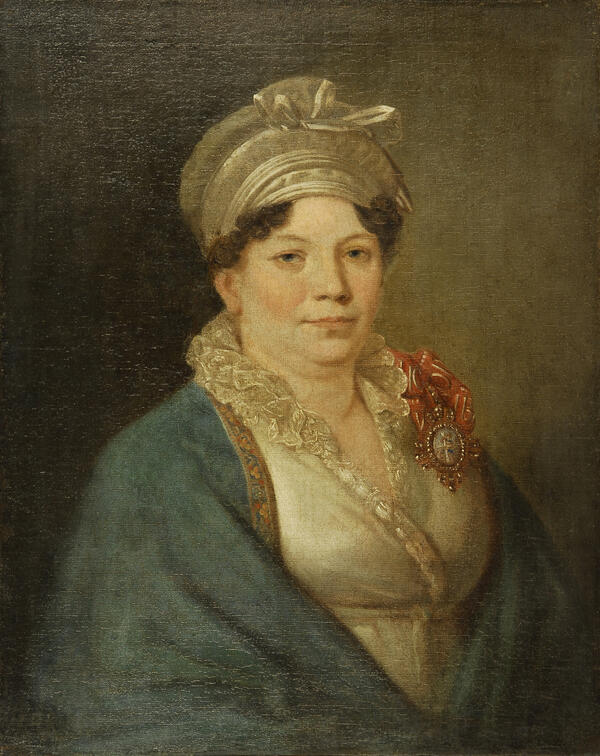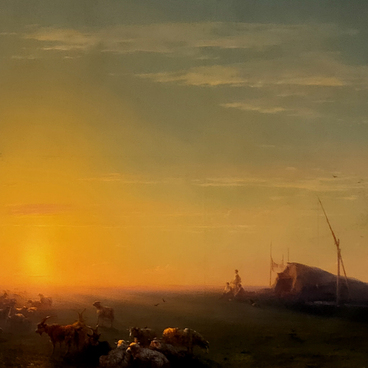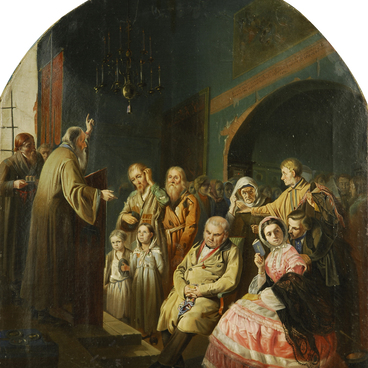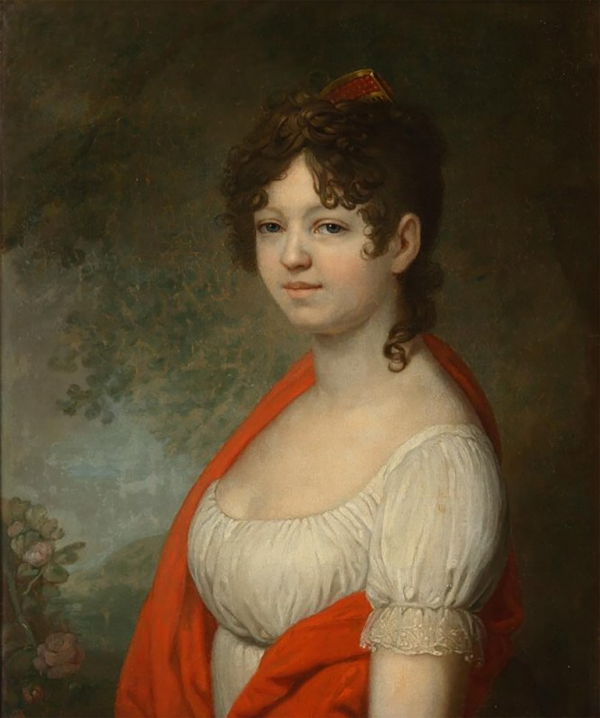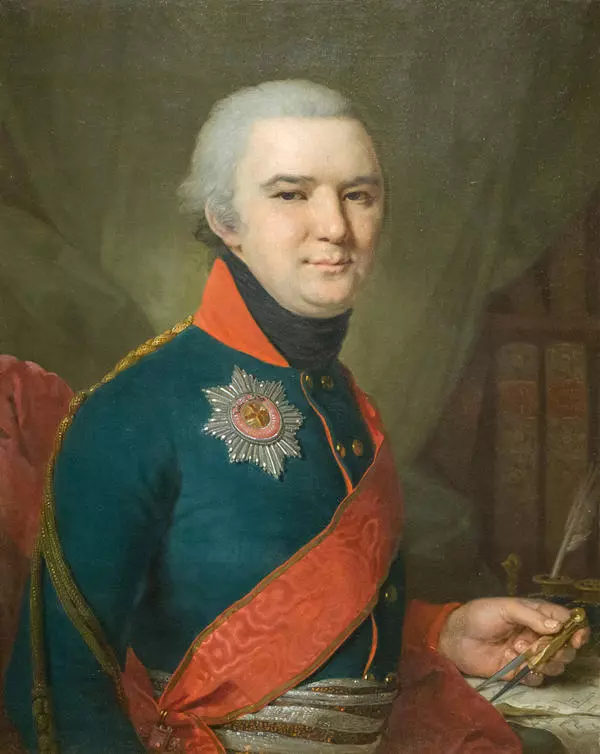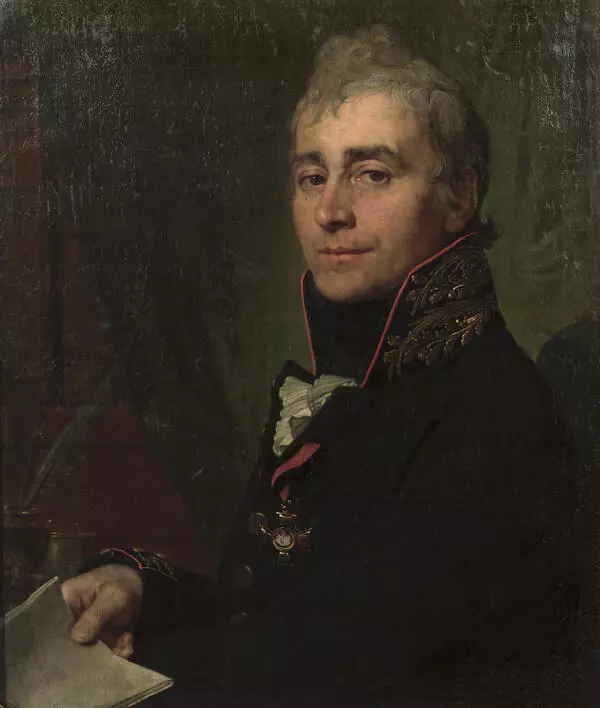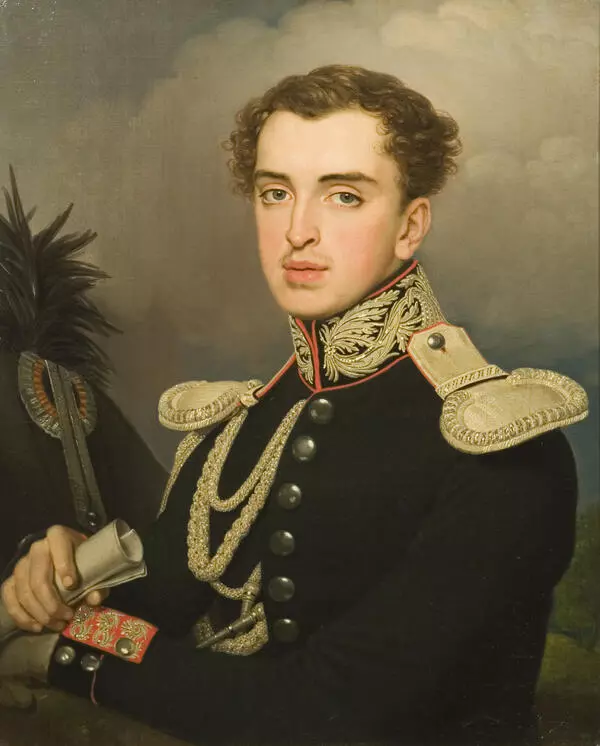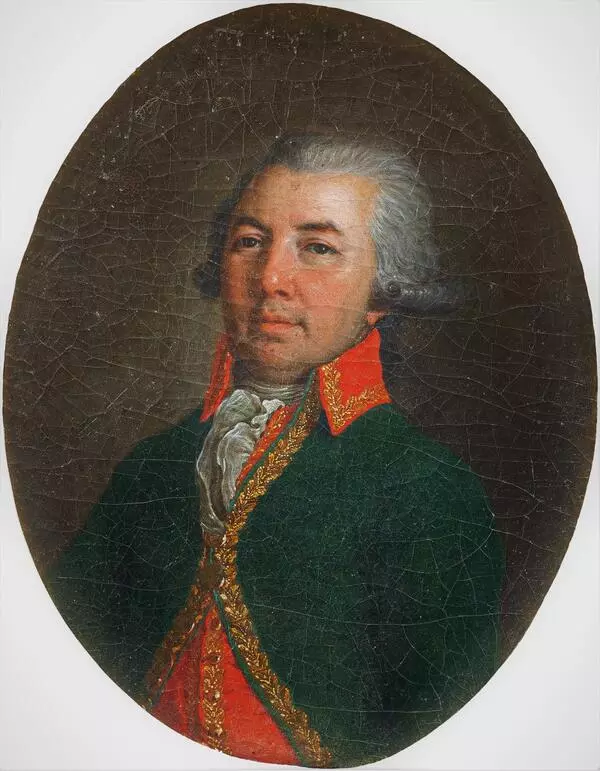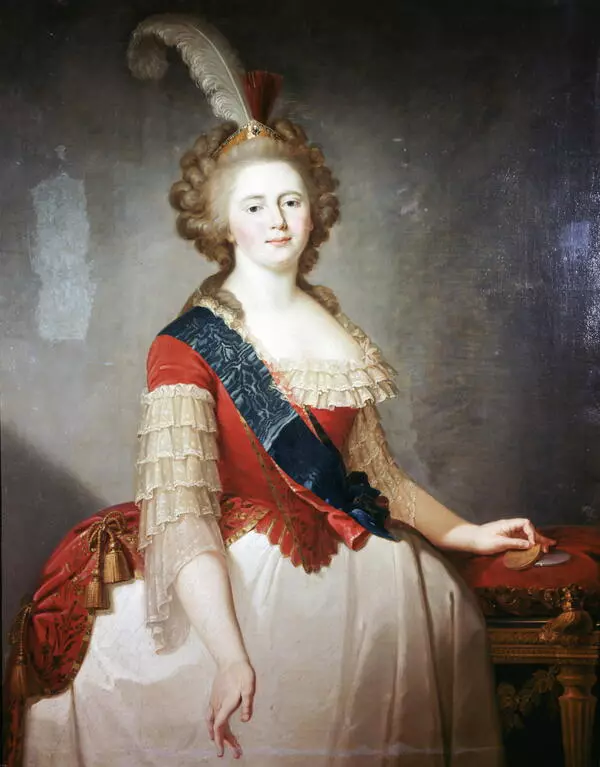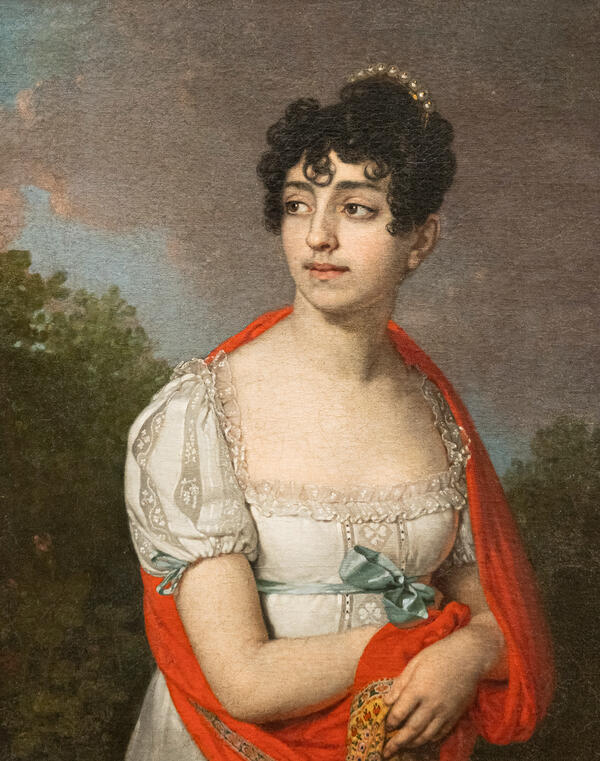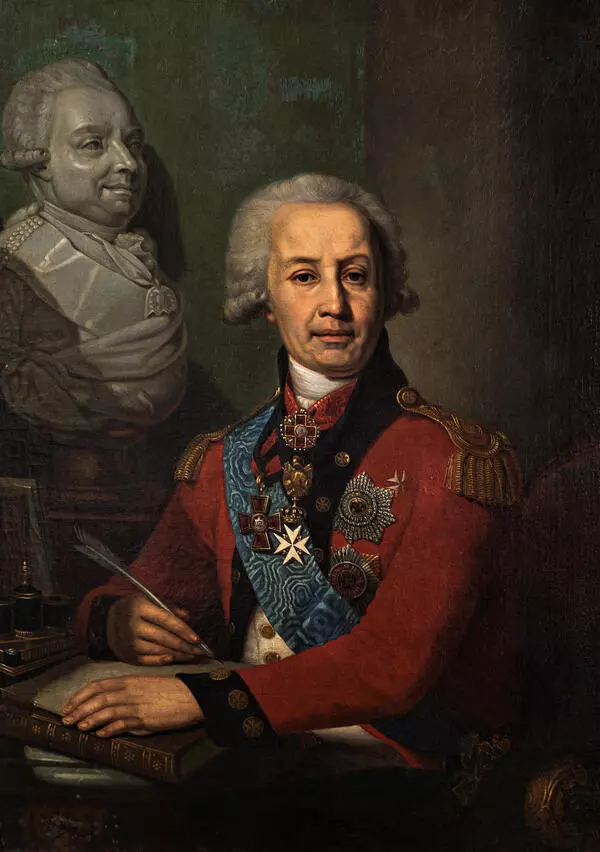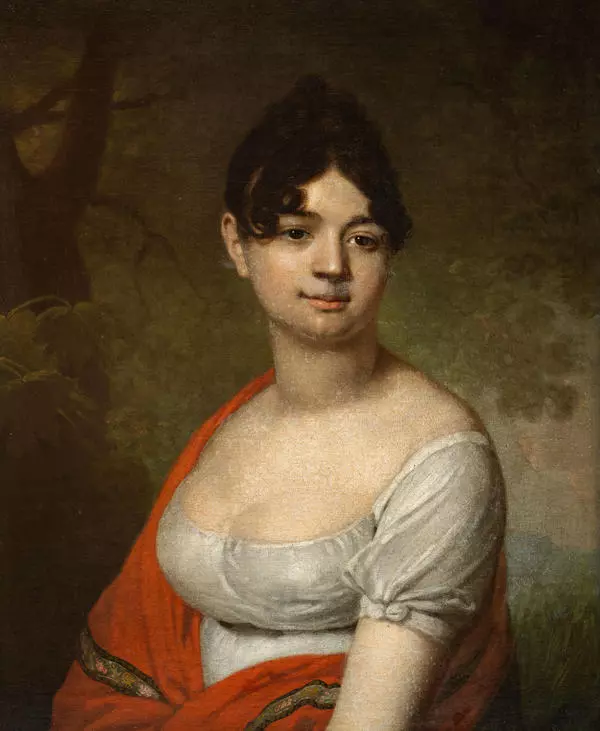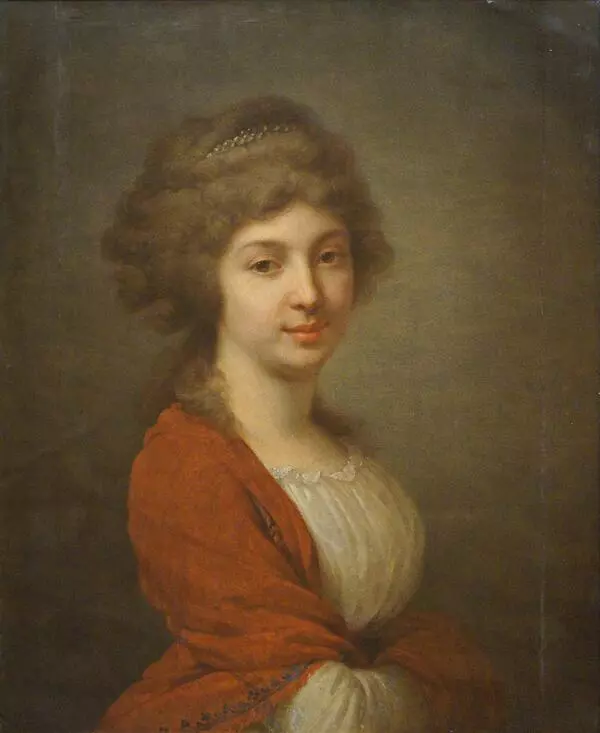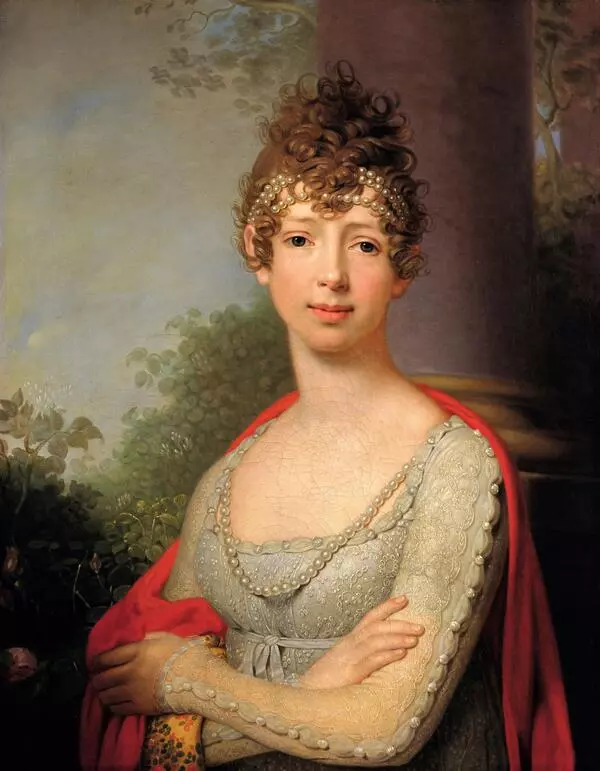Vladimir Borovikovskiy painted, The portrait of Countess Anna Ivanovna Konovnitsyna, in the period between 1815 and 1820. He portrayed the countess with a serious look and thin pressed lips. The countess is fitted in a dress with a lace collar. She threw a green shawl over her dress, and covered her hair with a light colored bonnet. The artist genuinely conveyed the texture of every fabric: the shawl looks soft and velvety, and the dress and bonnet glimmer with a subtle shine. On the left shoulder of the countess a red ribbon with the order of Saint Catherine the Great Martyr can be seen. The second name of the distinction is Order of the Liberation. In the Russian Empire it was awarded to Grand Duchesses and ladies of high nobility.
Anna Konovnitsyna at the age of 32 married General Pyotr Konovnitsyn, who was the Minister of War and a talented military commander. According to historian Lidia Ivchenko, the general’s wife considered herself “happier than most”, in family life, despite the late marriage. The spouses’ love for one another was candid and strong. When the general left for military campaigns, they sent each other three letters a day. ‘May Almighty God keep you safe, and know that I will love you until my very last breath, ’ she wrote to her husband.
He responded to her in the same fashion. Immediately after the battle of Borodino, Pyotr Konovnitsyn sent home news and a gentleman’s coat: a cannonball that had flown right by it tore the lapel off that coat. He accompanied this “curiosity”, with the words: “I neither want ranks nor decorations. There”s nothing in this world that compares to the love and happiness of family. My dear friend, I would take out my heart for you”. In return, Anna Konovnitsyna sent Pyotr Konovnitsyn, “a sweater, a warm kerchief, socks, gloves, ” and a message: “I knitted all of this for you with all my heart so that, for heaven”s sake, you wear it for health”.
And at the same time, a loving and tender wife could become a stern general spouse, if needed in order to protect the family. It is widely known that her daughter married a Decembrist. After the Decembrist revolt, Nicholas I sentenced him to hard labor. Later, the Emperor wrote: ‘… This morning Madame Konovnitsyna almost walked into my chamber. These are the women I fear most’.
Vladimir Borovikovskiy could convey this complex nature in his portrait. He portrayed the Countess softly, as if she were enveloped in a light mist. The artist wanted to emphasize that this woman can be gentle and romantic. Simultaneously, the general’s wife purses her lips and looks directly at the viewer with dignity.
The moment this canvas was created Anna Konovnitsyna was already more than forty years of age, and she was still happily married. She had to bury her husband in 1822. She outlived Pyotr Konovnitsyn by more than twenty years.

